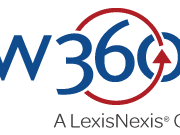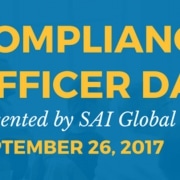Point-of-Risk Compliance
 This piece is cross posted from ES collaborator Jeffrey Kaplan‘s “Conflicts of Interest” blog with permission.
This piece is cross posted from ES collaborator Jeffrey Kaplan‘s “Conflicts of Interest” blog with permission.
Marketers have long known that “point-of-sale” display of products can be a powerful advertising tool. But can its logic be put to work for promoting compliance and ethics?
I was recently asked by a client to fill out a vendor information form and noticed that in addition to seeking information from vendors the form required the employee proposing the hiring to certify that any conflict of interest involving the vendor had been disclosed and okayed by management and the C&E officer. While I know that many companies have some form of COI certifications (see prior posts), I can’t recall having seen one on a vendor information form of this sort before – even though the common sense of such a “point-of-risk” compliance approach seems pretty obvious. Indeed, it is hard to think of any reason why a company wouldn’t do this.
Moreover, such an approach is supported by behavioral science, as described in this earlier post. And, as also noted in that post, beyond the COI risk area there is no shortage of other “point-of-risk” compliance opportunities for many companies:
- “anti-corruption – before interactions with government officials and third-party intermediaries;
- competition law – before meetings with competitors (e.g., at trade association events);
- insider trading/Reg FD – during key transactions, before preparing earnings reports;
- protection of confidential information – when receiving such information from third parties pursuant to an NDA;
- … accuracy of sales/marketing – in connection with developing advertising, making pitches; and
- employment law – while conducting performance reviews…” (Note: in the earlier post I refer to this approach as “just-in-time” compliance, but on reflection think that “point of risk” is closer to the mark.)
Doubtless there are many others too.
I should stress that this suggestion does not imply an increase in the total amount of C&E education, which for some companies would be a non-starter. Rather, a robust “point-of-risk” strategy might allow a company to decrease its use of less impactful communications, meaning principally those that lack immediacy and context. Thinking more broadly, a “point of risk” C&E communication strategies might work for teaching ethics in business schools and colleges. Writing last week in the Huffington Post, William Steiger of the University of Central Florida’s College of Business Administration argued that: “Business schools should use examples of ethical practices and decision-making throughout the curriculum, not just in the ethics class.” I agree (and indeed when I was teaching business ethics years ago made a similar proposal; I hope Steiger has more success with this than I did).
Whether it is in the workplace or classroom, there is a growing need to find ways to better communicate and otherwise support ethical expectations. For many businesses and schools, a point-of-risk approach may be a good place to start.
Takeaways (ethical action steps to improve organizational culture):
- Reduce the general messages, increase the messages that come at times of risk
- Identify points of risk that can be addressed by just-in-time communications
- Use a communications strategy that has immediacy and context






